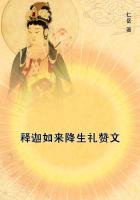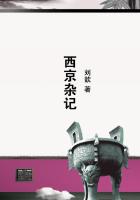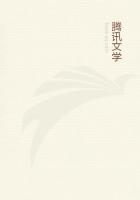As already pointed out, the progress hitherto made has been rather in the way of joining up the great classes of plants than in tracing the descent of particular species or genera of the recent flora. There appears to be a difference in this respect from the Animal record, which tells us so much about the descent of living species, such as the elephant or the horse.
The reason for this difference is no doubt to be found in the fact that the later part of the palaeontological record is the most satisfactory in the case of animals and the least so in the case of plants. The Tertiary plant-remains, in the great majority of instances, are impressions of leaves, the conclusions to be drawn from which are highly precarious; until the whole subject of Angiospermous palaeobotany has been reinvestigated, it would be rash to venture on any statements as to the descent of the families of Dicotyledons or Monocotyledons.
Our attention will be concentrated on the following questions, all relating to the phylogeny of main groups of plants: i. The Origin of the Angiosperms. ii. The Origin of the Seed-plants. iii. The Origin of the different classes of the Higher Cryptogamia. i. THE ORIGIN OF THE ANGIOSPERMS. The first of these questions has long been the great crux of botanical phylogeny, and until quite recently no light had been thrown upon the difficulty. The Angiosperms are the Flowering Plants, par excellence, and form, beyond comparison, the dominant sub-kingdom in the flora of our own age, including, apart from a few Conifers and Ferns, all the most familiar plants of our fields and gardens, and practically all plants of service to man. All recent work has tended to separate the Angiosperms more widely from the other seed-plants now living, the Gymnosperms. Vast as is the range of organisation presented by the great modern sub-kingdom, embracing forms adapted to every environment, there is yet a marked uniformity in certain points of structure, as in the development of the embryo-sac and its contents, the pollination through the intervention of a stigma, the strange phenomenon of double fertilisation (One sperm fertilising the egg, while the other unites with the embryo-sac nucleus, itself the product of a nuclear fusion, to give rise to a nutritive tissue, the endosperm.), the structure of the stamens, and the arrangement of the parts of the flower.
All these points are common to Monocotyledons and Dicotyledons, and separate the Angiosperms collectively from all other plants.
In geological history the Angiosperms first appear in the Lower Cretaceous, and by Upper Cretaceous times had already swamped all other vegetation and seized the dominant position which they still hold. Thus they are isolated structurally from the rest of the Vegetable Kingdom, while historically they suddenly appear, almost in full force, and apparently without intermediaries with other groups. To quote Darwin's vigorous words: "The rapid development, as far as we can judge, of all the higher plants within recent geological times is an abominable mystery." ("More Letters of Charles Darwin", Vol. II. page 20, letter to J.D. Hooker, 1879.) A couple of years later he made a bold suggestion (which he only called an "idle thought") to meet this difficulty. He says: "I have been so astonished at the apparently sudden coming in of the higher phanerogams, that I have sometimes fancied that development might have slowly gone on for an immense period in some isolated continent or large island, perhaps near the South Pole." (Ibid, page 26, letter to Hooker, 1881.) This idea of an Angiospermous invasion from some lost southern land has sometimes been revived since, but has not, so far as the writer is aware, been supported by evidence. Light on the problem has come from a different direction.
The immense development of plants with the habit of Cycads, during the Mesozoic Period up to the Lower Cretaceous, has long been known. The existing Order Cycadaceae is a small family, with 9 genera and perhaps 100species, occurring in the tropical and sub-tropical zones of both the Old and New World, but nowhere forming a dominant feature in the vegetation.
Some few attain the stature of small trees, while in the majority the stem is short, though often living to a great age. The large pinnate or rarely bipinnate leaves give the Cycads a superficial resemblance in habit to Palms. Recent Cycads are dioecious; throughout the family the male fructification is in the form of a cone, each scale of the cone representing a stamen, and bearing on its lower surface numerous pollen-sacs, grouped in sori like the sporangia of Ferns. In all the genera, except Cycas itself, the female fructifications are likewise cones, each carpel bearing two ovules on its margin. In Cycas, however, no female cone is produced, but the leaf-like carpels, bearing from two to six ovules each, are borne directly on the main stem of the plant in rosettes alternating with those of the ordinary leaves--the most primitive arrangement known in any living seed-plant. The whole Order is relatively primitive, as shown most strikingly in its cryptogamic mode of fertilisation, by means of spermatozoids, which it shares with the maidenhair tree alone, among recent seed-plants.
In all the older Mesozoic rocks, from the Trias to the Lower Cretaceous, plants of the Cycad class (Cycadophyta, to use Nathorst's comprehensive name) are extraordinarily abundant in all parts of the world; in fact they were almost as prominent in the flora of those ages as the Dicotyledons are in that of our own day. In habit and to a great extent in anatomy, the Mesozoic Cycadophyta for the most part much resemble the recent Cycadaceae.















